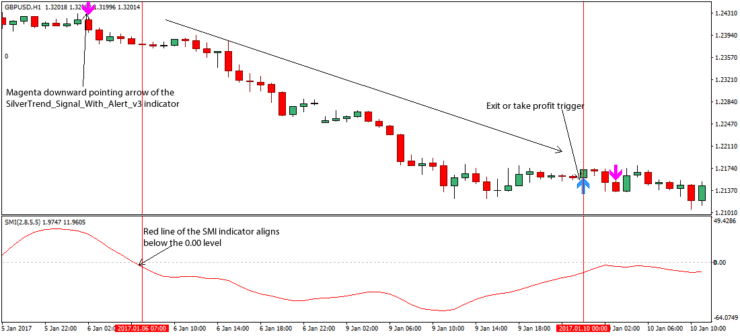The idea of trading precious metals can be quite exhilarating. However, it’s important to go in with a clear idea of how the market works. After all, as with trading any asset class, it is your hard-earned money at risk.
Our Forex Signals
1 - month
Subscription
 Up to 15 signals daily
Up to 15 signals daily 76% success rate
76% success rate Entry, take profit & stop loss
Entry, take profit & stop loss Amount to risk per trade
Amount to risk per trade Risk reward ratio
Risk reward ratiomonth
3 - month
Subscription
 Up to 15 signals daily
Up to 15 signals daily 76% success rate
76% success rate Entry, take profit & stop loss
Entry, take profit & stop loss Amount to risk per trade
Amount to risk per trade Risk reward ratio
Risk reward ratiomonth
 Most popular
Most popular
6 - month
Subscription
 Up to 15 signals daily
Up to 15 signals daily 76% success rate
76% success rate Entry, take profit & stop loss
Entry, take profit & stop loss Amount to risk per trade
Amount to risk per trade Risk reward ratio
Risk reward ratiomonth
Lifetime
Subscription
 Up to 15 signals daily
Up to 15 signals daily 76% success rate
76% success rate Entry, take profit & stop loss
Entry, take profit & stop loss Amount to risk per trade
Amount to risk per trade Risk reward ratio
Risk reward ratioSeparate Swing Trading Group
 Up to 3 signals weekly
Up to 3 signals weekly 76% success rate
76% success rate Entry, take profit & stop loss
Entry, take profit & stop loss Amount to risk per trade
Amount to risk per trade Risk reward ratio
Risk reward ratiomonth
1 - month
Subscription
 Up to 15 signals daily
Up to 15 signals daily 76% success rate
76% success rate Entry, take profit & stop loss
Entry, take profit & stop loss Amount to risk per trade
Amount to risk per trade Risk reward ratio
Risk reward ratiotime
Silver has been a store of value and form of currency for over 4,000 years. In terms of the latter, for the most part, this came to an end between the mid-1930s and 1970s when many countries left it behind as legal tender.
3
Payment methods
Trading platforms
Regulated by
Support
Min.Deposit
Leverage max
Currency Pairs
Classification
Mobile App
Min.Deposit
$100
Spread min.
Variables pips
Leverage max
100
Currency Pairs
40
Trading platforms
Funding Methods





Regulated by
FCA
What you can trade
Forex
Indices
Actions
Cryptocurrencies
Raw Materials
Average spread
EUR/GBP
-
EUR/USD
-
EUR/JPY
0.3
EUR/CHF
0.2
GBP/USD
0.0
GBP/JPY
0.1
GBP/CHF
0.3
USD/JPY
-
USD/CHF
0.2
CHF/JPY
0.3
Additional Fee
Continuous rate
Variables
Conversión
Variables pips
Regulation
Yes
FCA
No
CYSEC
No
ASIC
No
CFTC
No
NFA
No
BAFIN
No
CMA
No
SCB
No
DFSA
No
CBFSAI
No
BVIFSC
No
FSCA
No
FSA
No
FFAJ
No
ADGM
No
FRSA
71% of retail investor accounts lose money when trading CFDs with this provider.
Min.Deposit
$100
Spread min.
- pips
Leverage max
400
Currency Pairs
50
Trading platforms
Funding Methods




Regulated by
CYSECASICCBFSAIBVIFSCFSCAFSAFFAJADGMFRSA
What you can trade
Forex
Indices
Actions
Cryptocurrencies
Raw Materials
Etfs
Average spread
EUR/GBP
1
EUR/USD
0.9
EUR/JPY
1
EUR/CHF
1
GBP/USD
1
GBP/JPY
1
GBP/CHF
1
USD/JPY
-
USD/CHF
1
CHF/JPY
1
Additional Fee
Continuous rate
-
Conversión
- pips
Regulation
No
FCA
Yes
CYSEC
Yes
ASIC
No
CFTC
No
NFA
No
BAFIN
No
CMA
No
SCB
No
DFSA
Yes
CBFSAI
Yes
BVIFSC
Yes
FSCA
Yes
FSA
Yes
FFAJ
Yes
ADGM
Yes
FRSA
71% of retail investor accounts lose money when trading CFDs with this provider.
Min.Deposit
$50
Spread min.
- pips
Leverage max
500
Currency Pairs
40
Trading platforms
Funding Methods




What you can trade
Forex
Indices
Actions
Raw Materials
Average spread
EUR/GBP
-
EUR/USD
-
EUR/JPY
-
EUR/CHF
-
GBP/USD
-
GBP/JPY
-
GBP/CHF
-
USD/JPY
-
USD/CHF
-
CHF/JPY
-
Additional Fee
Continuous rate
-
Conversión
- pips
Regulation
No
FCA
No
CYSEC
No
ASIC
No
CFTC
No
NFA
No
BAFIN
No
CMA
No
SCB
No
DFSA
No
CBFSAI
No
BVIFSC
No
FSCA
No
FSA
No
FFAJ
No
ADGM
No
FRSA
71% of retail investor accounts lose money when trading CFDs with this provider.
These days, largely due to the birth of the internet – millions of people trade silver daily, all over the globe. Most regulated brokers will offer you leverage of 1:10 on silver, meaning you can trade with 10 times as much as you have in your account.
Does silver trading sound like something you are interested in? If so, you are going to need a good broker to enable you to access the markets. We’ve got your back, as today we are going to detail the fundamentals of silver trading – alongside the many ways in which you can access this precious metal.
For good measure, we are also going to divulge some trading strategies, key metrics when finding a platform, and of course – our 5 best silver trading brokers.
Eightcap - Regulated Platform With Tight Spreads

- Minimum deposit of just 250 USD to get lifetime access to all the VIP channels
- Use our Secure and Encrypted Infrastructure
- Spreads from 0.0 pips on Raw Accounts
- Trade on the Award-Winning MT4 & MT5 Platforms
- Multi-jurisdictional Regulation
- No Commission Trading on Standard Accounts

Silver Trading Fundamentals
Where better to start than the bare basics of silver trading. No matter what asset you are interested in – whether it be currencies, oil, or Amazon stocks – the goal is to sell the asset for more than you bought it for. Thus making gains.
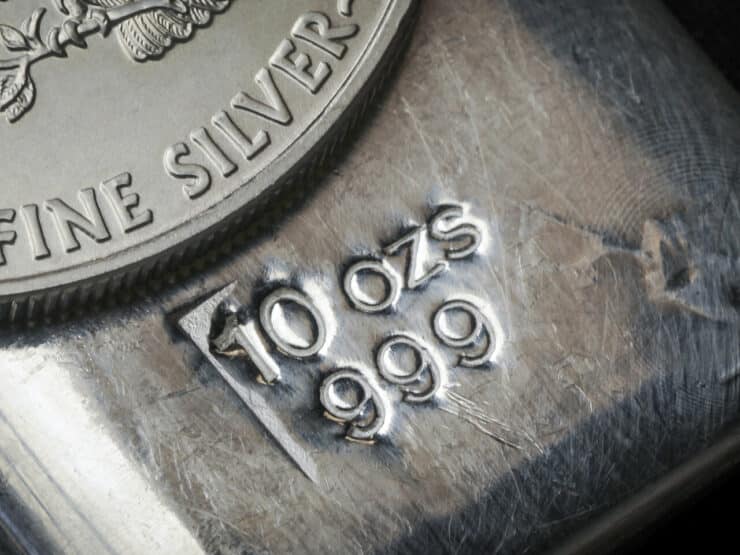
- Speculate on whether silver will rise above, or fall below its current value
- To indicate your prediction to your broker – place a buy or sell order accordingly
- The goal is to speculate correctly and come away with more than you started with/make a profit
When putting on your trading cap, it’s important that you leave your emotions at the door. Making decisions on the short or long-term price shifts of silver can be tricky as it is, As such, you do not want fear or greed leading you to make hasty decisions.
Whereas in the past, people would meet face to face to trade precious metals and grains, etc – these days it’s mostly done online. In this setting, there are a handful of ways to trade silver.
For instance, if you wanted to trade silver in the short-term, you can opt for a day trading strategy. For those unaware, day trading involves keeping your position open for less than one day. This can a trade duration of seconds, minutes, or hours.
If you want to trade in the short-term, but for a little longer than day trading commands – then swing trading might be more your cup of tea. The objective of swing trading is to hold onto a potential trend of silver. Swing traders heavily rely on technical analysis to help them decide when to enter or exit trades – often utilizing trialing stop-loss orders too
One of the most common ways to trade silver in this day and age tends to be via CFDs (Contracts for Difference). CFDs allow your average Joe to trade silver without having to store or own physical lumps of the asset.
What Drives the Cost of Silver?
Knowing what drives the cost of silver is only going to help you in your decision-making process. The reason for this is that you will have a clearer understanding of what to look out for when performing fundamental and technical analysis.
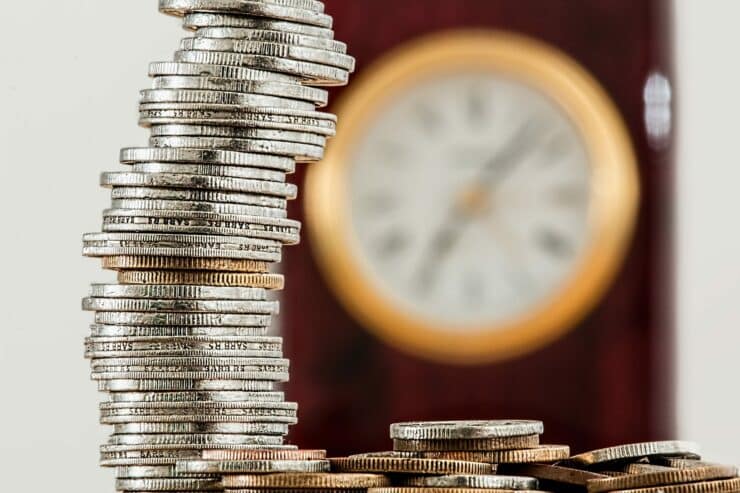
Let’s give you a simple example of supply and demand:
- If the supply of silver rises, the price of silver will fall. This is because there is more silver than buyers actually want or need.
- If, however, global demand for silver increases, as will its price.
As you can see, it’s all about how much is supplied, and what the demand of the wider market is. A great way to check on the market sentiment of silver is to add technical and fundamental analysis to your trading strategy.
How is the Price of Silver Calculated?
We all know that silver is a valuable commodity, a precious metal – but, how is it calculated?
Silver, much like gold, natural gas, and oil, tends to be calculated and quoted in US dollars. The reason for this is that the USD is considered to be the strongest and most in-demand currency in the world.
When it comes to the weight of silver, you will usually find that brokers calculate the asset in troy ounces. On occasion, it will be quoted in kilos or grams.
With that said, in terms of funding your silver broker account, you will generally find that you can deposit in most currencies. If not, there will likely be a small conversion fee into the trading platform’s accepted currency.
When is the International Silver Market Open?
You are able to partake in silver trading 23 hours per day. This is because the markets take a 60-minute break before resuing into the next trading session.
To give you an idea, in the USA those hours are Sunday to Friday 6 pm to 5 pm. According to GMT, those hours are 10 pm Sunday to 9 pm Friday.
The vast majority of silver OTC markets overlap one another. As such, you should find that the best silver trading brokers will be able to offer you access to a variety of different markets.
How Can I Trade Silver?
In this section of our best silver trading brokers guide, we are going to dive right into the various ways you will be able to trade this shiny asset.
Silver Trading: CFDs
As we briefly touched on, silver trading via CFDs is one of the most popular ways to trade online. The best part is you can buy and sell silver, without having to own, take delivery of, and store the asset.
Instead, CFDs simply monitor the real-world price shifts of silver. This is a financial instrument that has been created by your broker.
All that you need to do is speculate on whether the value of silver will rise or fall, and place a buy or sell order with your broker. This is essentially a ‘contract’ with the online trading site in question.
Here is a simple example, to clear the mist on silver ‘contracts for differences’:
- The global price of silver is $24.04
- Your CFD broker is also offering a market at $24.04
- The global price of silver rises to $26.00
- This shows a price increase of 8.15%
- Your CFD also increases in value by 8.15%
As you can see from the above, your silver CFD will always mirror the real-world value of the asset
You will usually find that you can trade silver CFDs whilst paying little or no commission via most trading platforms. You can also expect competitive spreads and leverage on silver CFDs.
For those unaware, leverage is like a loan from your broker. This allows you to trade silver with more than your trading account balance permits.
If you reside in Europe, Australia, or the UK you will be limited to how much leverage you can apply to your trade. This is due to the regulatory body limits in place. For instance, in the UK and Europe you are capped at 1:10 – also shown as 10x instead of a ratio.
Some overseas or unregulated brokers will offer as much as 1:500 leverage. However, we would strongly recommend avoiding these trading platforms. You will not have any regulatory protection for one. Second of all – not only could you magnify your profit by 500x, but you could magnify your losses by as much.
An additional benefit of trading silver CFDs is that you can make gains from the price of silver falling as well as rising.
This is achieved by going short. Let us show you an example:
- Your trading platform quotes silver at $24.04 per ounce
- You have a feeling the price is going to fall within hours
- As such, you place a sell order worth $1,000
- In the coming hours, the value of silver falls by 1.5%
- You made a profit of $15 from your $1,000 sell order
If, on the other hand, you had applied leverage of 1:10, that same stake would have become $10,000. As such, your profit from this silver trade would have been $150, instead of $15.
As noted, it is imperative that you do not use leverage lightly. Whilst yes, it can give you a much bigger profit – if your trade goes the other way you are in the red. Always tread with caution.
Silver Trading Options
Whilst the lion’s share of silver traders do so via CFDs – there are alternatives. One of which is silver trading ‘options’.
Options refer to a contract that has an expiry date attached to it. If you happen to think the price of silver is going to skyrocket – purchase call options. This enables you to purchase silver at a particular price, within a specific timeframe.
Let’s put forward an example of a silver options trade to clarify:
- You have purchased call options
- The call options expire after 3 months
- The strike price sits at $26.00 per troy ounce
- This is an indication that you believe the value of silver will rise above $26 – either prior to the options expiry date, or on that date.
- Before you can access the market via your broker, you will need to pay a percentage of the options contract price
- This percentage is called the ‘premium’ and must be paid upfront
- Let’s imagine your broker charges a 3% premium of your call options contract
- Your premium, in this case, is $0.78 (3% of $26.00)
There are two possible outcomes of this hypothetical trade. If the price rises above the ‘strike price’ – you have the right but are not obligated to purchase the asset. Alternatively, if the opposite happens, you lose your premium of $0.78 – which is for each and every contract.
If you had thought the price of silver was going to fall before the contract expiry date – you would have bought put options instead.
Silver Trading Futures
Silver futures are comparable to CFDs because you can benefit from both the rise and the fall of an asset’s value. You can also use both ways of trading to apply leverage and boost your stake.
The big difference between silver CFDs and silver futures is that futures have an expiry date attached. When that futures contract expires you are obligated to buy the underlying asset (silver).
When we say you have to buy the asset, you won’t have a delivery of a sack full of silver bullion coins delivered to your door. These contracts are generally settled on a cash basis these days.
Futures contracts, no matter which asset you happen to be trading, tend to last 3 months. When the expiry date arrives, you must buy or sell it. Much like options, futures contracts always come with a ‘strike price’ attached.
Silver Trading Forex
Although it is highly likely that you know what the forex market is – to clarify it is the buying and selling of currency pairs.
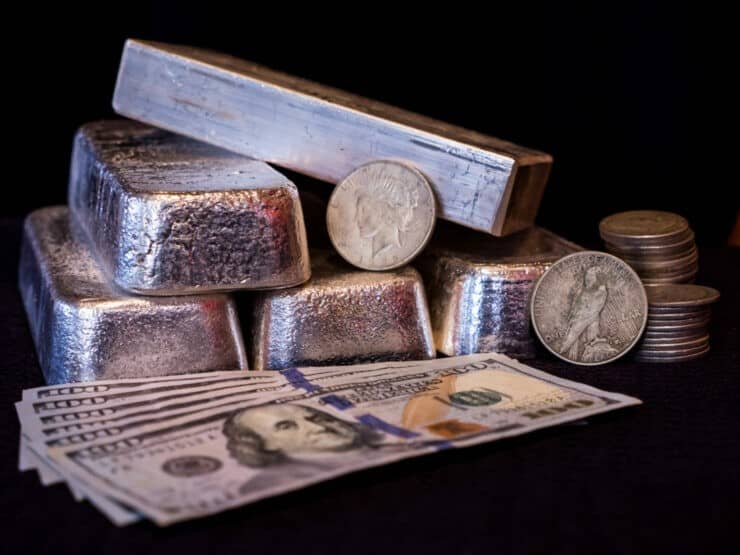
With that said, some opt to trade currencies against metals such as gold or silver. This is a great way to hedge against big financial news such as inflation or geopolitical turmoil.
To give you an example, silver against the US dollar would look like this on your trading platform – XAG/USD.
Silver Trading: ETFs
If you want to buy silver, but indirectly – think about silver ETFs. These ‘exchange-traded funds’ typically track the real-world price of silver.
Let’s have a look at the basic premise of a silver ETF:
- You are interested in buying silver
- You decide to buy an Aberdeen Standard Physical Silver Shares ETF (SIVR)
- SIVR monitors the performance of silver
You now have full access to silver shares without needing to own the asset. On the contrary, SIVR monitors the spot price and holds the silver itself. As such, if the global value of silver increases, as will your ETF investment.
Three Popular Silver Trading Strategies
Now that we’ve given you the lowdown of various aspects of silver trading, it’s time we shed some light on trading strategies.
Silver Swing Trading
As we mentioned earlier, silver swing trading involves keeping a trade open for days, or weeks at a time.
This means backing the wider trend of the market. Keeping up to date with technical analysis is invaluable when it comes to speculating market sentiment.
When everything is pointing towards the silver momentum being strong, your goal will be to lock in gains by creating a buy order.
With swing trading, you can keep that position open as long as you see fit. If you feel the evidence points towards a change in the direction of the trend, you would likely create a sell order to cash out your long position. Then, you can place an additional sell order to catch the downward trend.
Use Support Levels
Support levels can also be described as ‘price levels’. These levels are going to show you what the resistance and support levels are in the silver market specifically.
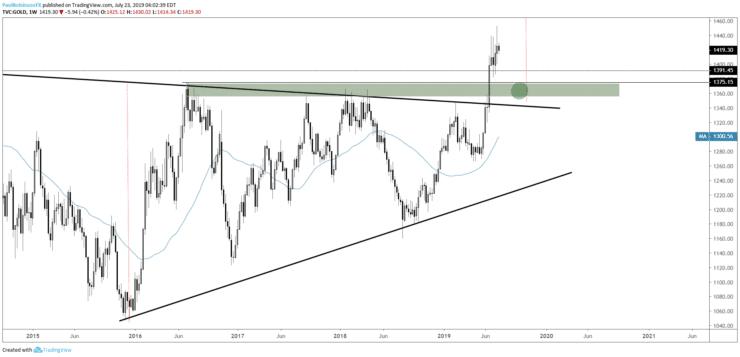
- If silver appears to be in the midst of a downward trend, you can action a stop-level to prevent the trade from losing too much value
- Trade with caution by creating a stop-loss order underneath the support line, after entering the market above the same line
Silver Scalping
Silver scalping is a great strategy for those of us who prefer to focus on small and regular gains, rather than the occasional downpour.
Traders using the scalping strategy tend to flourish in a volatile market environment, opening and closing multiple trades in a day. The main concept here is to profit when the price of silver stays within a certain price range for a prolonged period.
Otherwise known as a ‘consolidation period’, this allows scalpers to enter heaps of buy and sell positions. For as long as silver remains in this tight range, the scalper can make small, but very frequent profits.
Silver Trading Tips
It can be a little daunting moving into the world of trading precious metals, but not to worry, there are heaps of other newbie traders just like you.
Everyone has to start somewhere, and there are a plethora of tips and tricks to help you out. Below you will find a list of helpful ideas to use when trading silver online.
Read Silver Trading Books
By typing ‘silver trading books’ into a search engine you will see that there are hundreds of asset-specific books on offer.
Books, internet-based trading courses, educational videos, and even audiobooks can be a productive way to learn the ins and outs of silver trading. Not to mention technical analysis for that matter.
Keep Abreast With the Latest Silver News
As we explained earlier, fundamental analysis involves keeping abreast with the latest financial news.
Many things can affect the supply and demand of the market. This includes the following;
- War
- Economic forecasts
- Natural disasters
- Political instability
- Interest rates
- Market inflation
- Import and export levels
- Government bond yields
- Terms of trade
Use Silver Trading Signals
If keeping an eye on the news doesn’t fit into your daily schedule due to work commitments and such – consider silver trading signals. Silver trading signals send you trading suggestions on your asset of choice.
The software, or human (depending on your broker) – scans the relevant market looking for potentially profitable silver trading opportunities.
You will usually receive a buy and sell suggestion, as well as suggested stop-loss and take-profit orders. Signals can be sent via a push notification to your mobile, or to your email inbox – depending on the provider.
We at Learn 2 Trade also offer a fully-fledged Telegram signal service. Although our in-house traders typically focus on forex and cryptocurrencies – we do from time to time send out silver trading signals.
Utilize a Copy Trading Feature
A handful of brokers offer clients the chance to invest in a pro trader – copying their trades to the letter. This is a great strategy for newbies or people who would rather trade silver in a more passive manner.
The general procedure is as follows:
- You find a pro trader you want to copy – based on stats, historical success, risk, and asset focus
- Invest the minimum amount required to copy that person – for example, $200
- If that person invests 2.8% of their trading portfolio in silver – 2.8% of your own portfolio is invested in silver
- Essentially, whatever they buy or sell is reflected in your own portfolio, in proportion to your investment
Trade Silver With Paper Money
Trading silver with paper money shouldn’t be overlooked, as demo accounts are for newbie traders and experienced ones too.
Whilst not every broker will offer clients demo accounts, the ones that do will offer them for free. Generally speaking, this includes a large sum of demo funds and a trading environment that mimics the real-world silver market environment.
Key Metrics: Finding the Best Silver Trading Broker
Chances are you are now eager to get to the best silver brokers part of this guide. That said, you must be careful, as not all online brokers are worthy of your business.
With this in mind, we’re first going to cover some key metrics we think you should consider. This should help you in your search for a trading platform to execute your silver trades.
Commission and Other Fees
At the risk of stating the obvious, checking out a trading platform’s fee table and terms and conditions is one of the first things you should do.
After all, you might be on a high, making great decisions on every trade – but if the fees are extortionate then you won’t see much in the way of profit.
For instance, you might find that some trading platforms charge in excess of $12 for each and every trade. That’s for both entering and exiting the position. As you can imagine, if you aren’t careful, these commissions can add up. Imagine paying $24 just for a buy and sell position!
That said, the majority of online brokers will charge commission in the form of a percentage of your trade.
Let’s say, hypothetically speaking that your broker stipulates a 3% commission fee. This means that if you stake $1,000, you must pay $30 in commission, if they charge 1.5% you pay $15 – and so on.
When accessing CFDs, some of the best silver trading brokers will not charge you a cent in commission for the pleasure. Instead, they will make their money via the spread.
Now, onto ‘other’ fees. Whilst not every broker will charge them, there are a few more fees to be aware of when you are in pursuit of a silver trading platform.
We have listed those fees below:
Overnight Financing Fees
Overnight financing fees, or ‘swap fees’ are charged when a silver trade is left open overnight. It is comparable to an interest fee, payable to your broker for keeping your position open for you. This fee type is linked specifically to CFDs.
Inactivity Fees
Not all online brokerage firms charge this fee. However, it’s worth a mention. As you might have guessed this particular fee is charged after a period of inactivity on your trading account. Some trading platforms stipulate that if you haven’t actively traded or deposited into your account within say 6 or 12 months – a fee is chargeable.
This fee can vary, although we find this is usually between $10 and $40 per month – which is charged after the specified inactivity time has passed and will drain your account if you have funds in it.
Currency Conversion Fees
Again, this isn’t a fee seen at every online brokerage. For instance, some trading platforms operate using US dollars only, so you may be expected to pay a small fee if you want to deposit in a different currency.
This is usually a small percentage of your deposit – like 0.5% for example.
Platform Navigation
The broker you decide on should have a user-friendly website. This is especially the case for inexperienced silver traders.
Having a trading platform that is easy to navigate is going to make your trading endeavors a much smoother experience. These days, with so many of us opting to trade silver online, you shouldn’t have to look far for a great website.
The five platforms making up our best silver trading brokers list all have websites that are easy to navigate, making it a breeze for traders of all skill levels.
Deposit and Withdrawal Options
In order to start your silver trading journey, you need a broker. Moreover, for that broker to carry out your trades – you need to hand over some funds.
Topping up our trading account is easy – albeit, you should find a broker that accepts your preferred payment method.
You should find that many trading sites accept a variety of payment options, which can include credit/debit cards, bank transfers, and e-wallets such as PayPal, Neteller, and Skrill. Each brokerage will differ so always check your options.
Remember wire transfers take longer to reach your account, so could delay your silver trading adventures by 2-3 days.
Regulation
Another important metric to consider is regulation. By only dealing with regulated brokers, you are protecting yourself, and your funds from shady providers in the online space.
The best silver trading brokers seek to obtain a license from one or more respected regulatory bodies. These bodies keep the trading arena safe for everyone by enforcing rules and regulations.
In addition to holding brokers accountable for various aspects of customer care, they are legally obliged to partake in client fund segregation.
Just some of the most respected and trusted regulatory bodies in the silver trading space are listed below:
- Financial Conduct Authority (FCA): UK
- Commodities Futures Trade Commission (CFTC): US
- National Futures Association (NFA): US
- Cyprus Securities and Exchange Commission (CySEC): Cyprus
- Swiss Financial Market Supervisory Authority (FINMA): Switzerland
- Australian Securities & Investments Commission (ASIC): Australia
Spreads
Put simply, the spread your broker quotes to you is the gap between the sell price and ask price of silver. The spread on offer will vary greatly from broker to broker.
The tighter the spread is, the better it is for you. Check out our best trading brokers listed below for some competitive spreads on silver CFDs.
Best Silver Trading Brokers 2023
The time has come for us to divulge our best silver trading brokers 2023. As we’ve said, online trading platforms will be an essential part of your silver trading experience.
The first thing to do is to make sure the brokerage firm is able to offer you access to the silver markets. We have compiled a list below of the best silver trading brokers, all of which are fully regulated and offer silver CFDs – and competitive spreads.
1. AVATrade – Trade Silver CFDs With Tight Spreads
AvaTrade has been empowering traders for a good few years now. The platform serves clients in more than 150 countries around the world. Moreover, it is regulated by ASIC, FSA, FFAJ, FSCA, and ADGM.
AvaTrade offers silver CFDs and competitive spreads. According to the platform, when trading silver, clients can expect a spread of around $0.029. Clients also have access to a free silver trading demo account too - although, unfortunately, this is only valid for 21 days.
If you like the idea of being able to trade silver wherever you are then you will appreciate the downloadable app ‘AvaTradeGO’. This enables you to fund your account, and buy and sell on the move - wherever you have an internet connection.
For the MT4/5 fans out there, AvaTrade fully supports both third-party platforms. This means you can download the MT4/5 software and link it up to your broker account.
AvaTrade offers a whole host of educational and informative content, which is invaluable no matter which asset class you are trading.
The AvaTrade customer support team operates 24 hours a day, 5 days a week via various forms of contact. You can start trading silver with this broker for as little as a $100 minimum deposit.

- Min deposit $100
- Leverage of 1:10 on silver trades
- AvaTradeGO mobile app
- Free silver trading demo only valid for 21-days
2. VantageFX – Ultra-Low Spreads
VantageFX VFSC under Section 4 of the Financial Dealers Licensing Act that offers heaps of financial instruments. All in the form of CFDs - this covers shares, indices, and commodities.
Open and trade on a Vantage RAW ECN account to get some of the lowest spreads in the business. Trade on institutional-grade liquidity that is obtained directly from some of the top institutions in the world without any markup being added at our end. No longer the exclusive province of hedge funds, everyone now has access to this liquidity and tight spreads for as little as $0.
Some of the lowest spreads in the market may be found if you decide to open and trade on a Vantage RAW ECN account. Trade using institutional-grade liquidity that is sourced directly from some of the top institutions in the world with zero markup added. This level of liquidity and availability of thin spreads down to zero are no longer the exclusive purview of hedge funds.
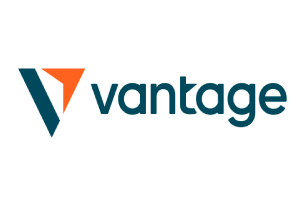
- The Lowest Trading Costs
- Minimum deposit $50
- Leverage up to 500:1
Open an Account With a Silver Trading Broker Right Now
Now that we have listed our best silver trading brokers, all that is left to do is sign up.
As most trading platforms have a similar registration process, we are going to give you a simple 3 step guide to start you off.
Step One – Sign up With a Silver Trading Brokerage
Once you have found an online broker you like, you can elect to sign up. With this in mind, head over to the website and hit the ‘sign up’ button – which will usually stand out on the page.
Next, as per KYC enforced by regulatory bodies – your broker is going to need proof of who you are.
You will usually be required to enter the following information to sign up:
- Full name
- Your address
- Email address
- Phone number
- National tax number
After the basics, you will need to send a clear copy of your passport or driving license. This is normal protocol with licensed trading platforms, mainly to prevent financial crime of various degrees.
Step Two – Deposit Funds Into Your Account
Next, you need to fund your new silver trading account.
Simply select the payment type from the drop-down list of what’s accepted and select a monetary value.
Step Three – Place an Order
Now that your brand new silver trading account is up and running, you can begin to trade.
Simply decide which way you think the price of silver is going to go and place your order accordingly. As well as using standard buy and sell orders, it is worth managing your risk/reward by utilizing stop-loss and take-profit orders.
Moreover, and where possible, it’s sensible to start out with a demo silver trading account. Not only to find your feet with trading, but they are useful for figuring out which strategy might be best for you when accessing the silver markets.
To Summarize
We think that by reading silver training guides like this and conducting plenty of your own research too – you stand a fighting chance of making the right choices – and therefore a profit.
Base your decisions on whether to enter or exit trades off the back of analysis and knowledge. This is much more effective than an expensive lesson in what not to do. Blind guessing can be an inexperienced silver trader’s downfall.
There are plenty of helpful tools available for silver traders, such as books, online courses, and educational videos. Then there are silver trading signals, automated robots, and copy traders to consider. If you still aren’t sure what is the best route for you – practice on a demo account to try out a few ideas.
Our final piece of advice is to elect to join a regulated broker. This way you benefit from client fund segregation, and other protections. The most recognized regulatory bodies in the world are the FCA, ASIC, CySEC, NBRB and a handful more.
AvaTrade - Established Broker With Commission-Free Trades

- Minimum deposit of just 250 USD to get lifetime access to all the VIP channels
- Awarded Best Global MT4 Forex Broker
- Pay 0% on all CFD instruments
- Thousands of CFD assets to trade
- Leverage facilities available
- Instantly deposit funds with a debit/credit card



